Detox timelines vary dramatically based on the substance, your body, and the treatment approach used.
Alcohol withdrawal typically resolves within 3-7 days with proper medical care, while opioid detox can last 5-10 days, and benzodiazepine withdrawal may require months of careful tapering.
This article will break down specific timelines for each substance and explain what factors influence your recovery duration.
How Long Does Detox Take for Different Substances?
The length of detox depends primarily on which substance you’re withdrawing from. Each drug affects your brain and body differently, creating unique withdrawal patterns and timelines.
Alcohol Detox Duration
Alcohol withdrawal symptoms typically begin 6-12 hours after your last drink and peak within 24-72 hours. Most people complete acute alcohol detox within 3-7 days when receiving proper medical supervision.
The timeline breaks down as follows:
- 6-24 hours: Minor symptoms like tremors, anxiety, and insomnia begin
- 24-72 hours: Peak withdrawal period with potential for seizures or hallucinations
- 3-7 days: Most acute symptoms resolve with appropriate treatment
Severe complications like delirium tremens usually emerge 48-96 hours after stopping and may persist for a week or longer. Symptom-triggered benzodiazepine protocols using the CIWA-Ar scale can reduce medication exposure and potentially shorten detox duration compared to fixed-dose schedules.
Opioid Detox Timeline
Opioid withdrawal timelines vary significantly based on the specific drug used. Short-acting opioids like heroin typically cause withdrawal symptoms to begin 6-12 hours after last use, with acute symptoms lasting about 5 days. Long-acting opioids like methadone have a later onset but more prolonged course.
Fentanyl presents unique challenges. Recent research shows fentanyl’s lipophilic properties cause it to remain in fatty tissues longer, especially in people with higher BMI. This can extend withdrawal symptoms and complicate traditional buprenorphine induction timing.
Modern treatment approaches focus on rapid stabilization rather than enduring withdrawal. ASAM’s 2023 clinical considerations recommend flexible buprenorphine initiation strategies, including:
- Low-dose “micro-induction” while continuing full opioid agonist
- High-dose rapid initiation in monitored settings
- Individualized approaches based on withdrawal severity and setting
Benzodiazepine Withdrawal Duration
Benzodiazepine detox requires a fundamentally different approach. The 2025 ASAM joint clinical practice guideline emphasizes that abrupt cessation should be avoided in physically dependent patients.
Timeline expectations include:
- Short-acting benzos (like alprazolam): Symptoms begin 6-8 hours after last dose, peak around day 2, and improve by days 4-5
- Long-acting benzos (like diazepam): Onset may be delayed over a week, with peak symptoms around week 2
The key difference is that benzodiazepine “detox” is actually a structured taper lasting weeks to months, often with 5-10% dose reductions at intervals adjusted to your symptoms and tolerance.

What Factors Affect How Long Detox Takes?
Several factors influence your detox timeline beyond the substance itself.
Substance-Related Factors
- Half-life and potency: Longer-acting drugs typically cause later onset but more prolonged withdrawal
- Dose and duration of use: Higher doses used over longer periods generally extend withdrawal duration
- Method of use: IV drug use often correlates with more severe withdrawal symptoms
Personal Health Factors
Your individual characteristics significantly impact detox length:
Body composition matters, especially for fentanyl users. Higher BMI correlates with longer fentanyl detectability and higher withdrawal severity scores.
Medical conditions can complicate withdrawal. Liver disease, kidney problems, heart conditions, and psychiatric disorders may extend detox timelines and require specialized monitoring.
Previous withdrawal episodes often worsen subsequent attempts. This “kindling” effect can make each detox more difficult and potentially longer than the last.
Treatment Approach Impact
The care model you receive dramatically affects your experience:
- Medication-assisted treatment transforms opioid withdrawal from days of suffering into rapid stabilization
- Symptom-triggered protocols for alcohol withdrawal reduce unnecessary medication and may shorten duration
- Integrated care addressing both substance use and mental health simultaneously improves outcomes
Concurrent withdrawal management when multiple substances are involved requires careful coordination but can reduce overall stabilization time compared to treating each substance separately.

Modern Detox Approaches That Shorten Recovery Time
Contemporary detox strategies focus on comfort, safety, and rapid transition to ongoing treatment rather than simply enduring withdrawal.
Evidence-Based Medication Protocols
For alcohol withdrawal, validated assessment tools like CIWA-Ar guide benzodiazepine dosing, preventing both under-treatment and over-medication. This approach consistently shortens detox duration while improving safety.
Opioid treatment has evolved significantly. Rather than waiting for moderate withdrawal before starting buprenorphine, new protocols allow initiation while patients are still using opioids. This eliminates the waiting period and reduces overall discomfort.
Comprehensive Care Models
Integrated treatment programs that combine medical detox with immediate linkage to ongoing care show better outcomes than detox-only approaches. Seamless transitions reduce the likelihood of relapse and repeat detox episodes.
The most effective programs address multiple needs simultaneously:
- Medical stabilization
- Psychiatric evaluation and treatment
- Social support coordination
- Discharge planning with confirmed appointments
Why Detox Duration Matters Less Than What Comes Next?
While understanding timelines helps with planning, focusing solely on detox duration misses the bigger picture. Detox is just the first step in recovery, not the destination.
Post-acute withdrawal syndrome can persist for months, featuring mood changes, sleep disturbances, and cravings that affect relapse risk. This is why continuing care matters more than the specific number of detox days.
For opioid use disorder specifically, research consistently shows that “detox-only” approaches without medication-assisted treatment lead to high readmission rates and increased overdose risk. The goal should be stabilization and transition to maintenance treatment, not abstinence alone.
Recovery is a process that extends far beyond the acute withdrawal phase. The most successful outcomes occur when detox seamlessly connects to comprehensive ongoing treatment that addresses the underlying causes of substance use.
If you’re considering detox or supporting someone who is, remember that professional medical supervision significantly improves both safety and comfort during withdrawal. The right treatment approach can minimize suffering while maximizing your chances of long-term recovery success.Getting started with professional detox care doesn’t have to wait. Contact Thoroughbred for medical detox services today & begin your journey toward lasting freedom from substance use.









